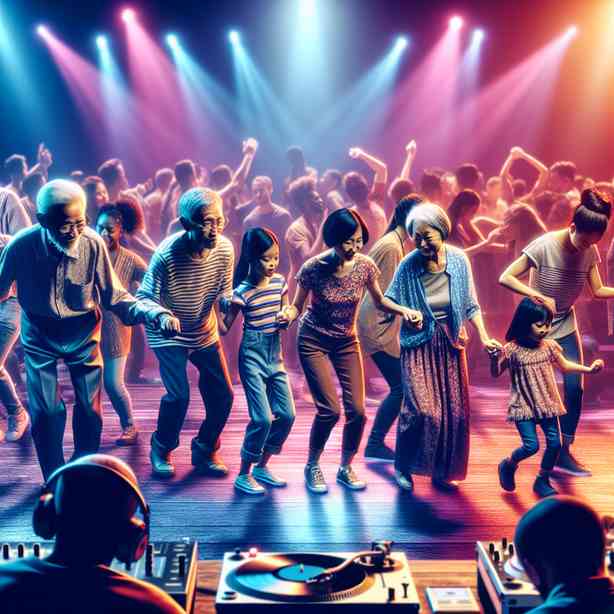
The Beat That Makes Your Shoulders Move
Music has a unique ability to connect with our emotions and physically move us, often in ways that we cannot quite articulate. One of the most mesmerizing aspects of music is its rhythm, and there’s a particular beat that seems to have the magical power to inspire movement, specifically in our shoulders. This rhythm instigates not just dance but a broader form of expression that transcends words. Let’s delve deeply into the nuances of such infectious beats and explore the psychology, cultural implications, and scientific perspectives that contribute to why certain rhythms make our shoulders shimmy.
To begin with, let’s define the essence of a beat that makes our shoulders move. Typically, this beat is characterized by a steady rhythm, often found in genres such as funk, soul, pop, and even certain styles of rock and hip-hop. The groove within these musical styles has a unique combination of heavy bass lines, syncopated drum patterns, and melodic overlays that engage our body. When we hear this kind of rhythm, our bodies instinctively respond, leading to spontaneous movement.
The physical response to music is an intriguing phenomenon. According to various studies on the biomechanics of music, our body’s motor functions are activated when we listen to rhythmic beats. The brain processes these rhythmic stimuli, often releasing dopamine, the feel-good neurotransmitter. This biochemical reaction can encourage us to sway, bob our heads, or even throw our shoulders back and forth in time with the music. The appeal of such music is universal; it’s not restrained by culture or geography.
Diving deeper into the cultural significance of rhythmic music, we see how different societies have embraced rhythm as a means of expression. Across diverse cultures, music often serves as a central component of social gatherings – from weddings to festive celebrations. In many traditions, rhythmic music invites communal movement and dance, illustrating how music can unite people. For instance, African tribal music heavily emphasizes rhythm, utilizing drums and body percussion to create infectious beats that often incite joyous dance.
The versatility of rhythm in music is also evident in contemporary genres. Modern pop music often employs repetitive hooks and strong beats that compel listeners to respond physically. Think of popular songs that become viral sensations due to their catchy rhythm. These tunes usually have an undeniable beat that makes people want to move, shedding their inhibitions and coming together as a collective. Social media platforms like TikTok have harnessed this power, giving rise to dance challenges centered around specific songs that have these infectious beats.
From a scientific perspective, the relationship between rhythm and movement is further underscored by research in neuroscience. Studies involving participants listening to different types of music indicate that the brain synchronizes body movements with the beat, naturally encouraging physical expression. The brain’s mirror neuron system plays an essential role here; it allows us to empathize and connect with others through rhythmic movements. When we see someone dancing, our brain engages in a process that makes us want to dance too, further illustrating the collective experience of music.
When considering the types of beats that particularly inspire shoulder movement, we cannot overlook genres like funk and disco. The “four-on-the-floor” beat prevalent in disco – where a bass drum hits on each beat – creates an undeniable urge to groove. Songs like “Stayin’ Alive” by the Bee Gees or “Super Freak” by Rick James are classic examples where the rhythm is paramount to their danceability. The combination of a steady beat and engaging melodies breaks down barriers, encouraging individuals to let loose and express themselves.
The communal aspect of the shoulder-moving beat cannot be understated as well. Many social dances revolve around these rhythms, wherein participants bond over shared movements. Dance styles such as the chicken dance or the electric slide are examples of how specific rhythms create a structured yet fun method of interaction. Such phenomena can be seen in both informal parties and structured dance events, uniting people around a common appreciation for rhythm and movement.
In conclusion, the beat that makes our shoulders move is intricately linked with both our biology and our culture. It serves as a bridge between individual enjoyment and collective experience, illustrating music’s unparalleled capability to unite us. Whether it’s through the steady pulse of a chosen genre or the infectious groove of a viral dance, these beats create the soundtrack of our social lives. As we continue to explore the significance of rhythm and dance in our world, it becomes apparent that this connection goes beyond the surface – it’s a celebration of life, joy, and shared experiences that moves us literally and figuratively. So next time you feel the urge to sway your shoulders, embrace that moment; it’s a beautiful testament to the power of music in our lives.


